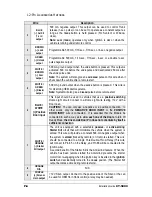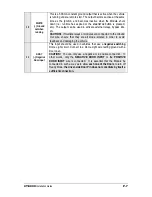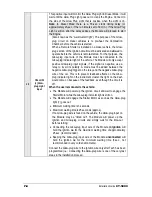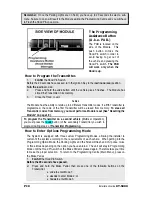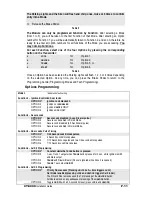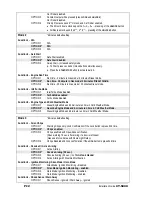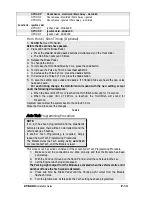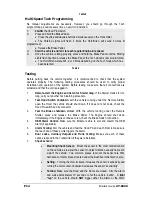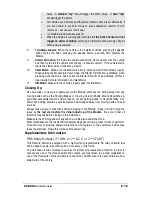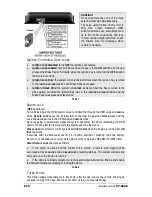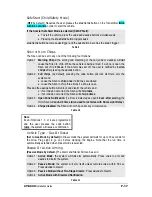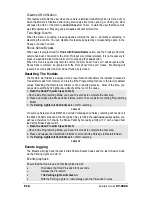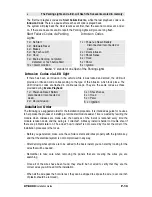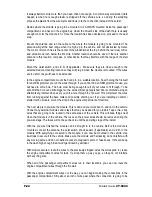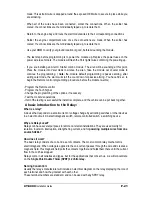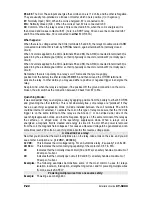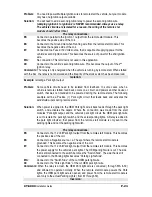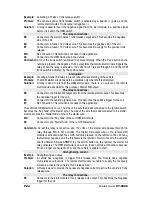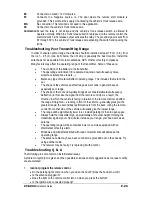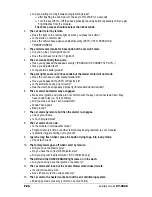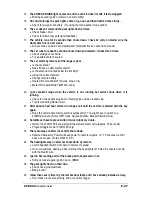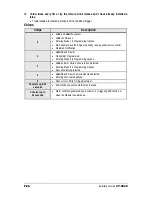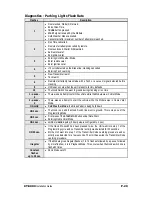
P.20
Installation
Guide
CT-5000
−
It always better to strip more than you need, than not enough. A common way cold solder joints
happen is when not enough plastic is stripped off the vehicle's wire, so during the soldering
process the plastic from the wire melts and flows in to the connection instead of the solder.
−
Decide where the module is going to be mounted. It is ALWAYS mounted inside the passenger
compartment, and never in the engine bay. Under the driver's side of the dash there is usually
enough room for the module to fit. Once the location has been decided on, proceed to the next
step.
−
Mount the antenna and run the cable to the where the module is going to be mounted. The
antenna will get the best range when it is high up in the vehicle, and not obstructed by metal.
The most common choice is the center of the windshield at the top, behind the rear view mirror,
and at least one inch below the tint strip. Another location should be used, if there is another
antenna in this location, compass, or other device that may interfere with the range of the start
module.
−
Mount the Valet switch, and L.E.D. (If applicable). Make sure they are close enough to the
selected module mounting location so they will plug in when the module is mounted. If the wires
are too short, they will have to be extended.
−
In the engine compartment, mount the hood pin, in a suitable location. Search along the fire wall
for an OEM grommet you run the wires through. If you cannot find an OEM grommet to use, you
will have to drill a hole. The hole must be big enough for all of your wires to fit through. To be
safe drill the hole out a little bigger so the wires will not get squished. We recommend using an
aftermarket grommet when ever you drill a hole through the fire wall. This will protect the wires
from rubbing against the bare metal and possibly shorting out. If you are installing an Alarm /
starter combo module, mount the siren in the engine compartment at this time.
−
The next step is to pre-wire the module. This Is done on your work bench, and not in the vehicle.
Connect any external modules and relays that may be needed for you install. Tape or tie- strap
wires that are going to be routed to the same areas of the vehicle. This will keep things neat
when the module is in the vehicle. The fuses on the power wires should be removed during the
pre-wire stage. The fuses will not be put back in until the powering stage of the install.
−
With the pre wire finished the module can be brought in to the vehicle. Before the module is
mounted, connect the antenna, the valet switch, shock sensor (if applicable) and L.E.D. to the
module. With everything connected to the module, it can now be mounted in the vehicle. Use
tie-straps to secure it to the vehicle. Make sure the module and harnessing do not interfere with
any moving parts, and do not obstruct access to diagnostic ports, or fuse boxes. It should be up
in the dash high enough that it won't get kicked by accident.
−
With module secured, route the wires to the previously stripped wires the correspond to ( leave
the engine compartment wires for last). Tie strap them up as you go, so they do not interfere
with any thing else.
−
When all of the passenger compartment wires run to their locations, you can now route the
engine compartment wires through the fire wall.
−
With the engine compartment wires out the way, you can begin making the connections in the
passenger compartment. Strip about an inch of wire past where the connection is going to be

